
Features
Training
Extrication Tips: July 2012
Attacking latch mechanisms to gain vehicle-compartment access on today’s vehicles may require a little adjustment.
July 6, 2012
By Randy Schmitz
Attacking latch mechanisms to gain vehicle-compartment access on today’s vehicles may require a little adjustment. Have you had trouble lately with door skins tearing with your hydraulic spreader tips? What about opening that damaged trunk lid to look for possible hazards?
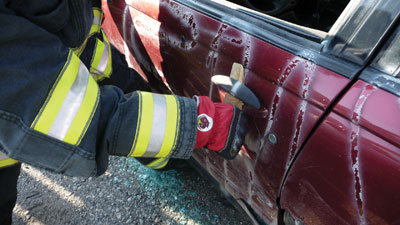 |
|
| Photo 1: Use a wooden wedge, a rolled-up glove, or a tennis ball under the door handle to give some relief of the latching mechanism. |
|
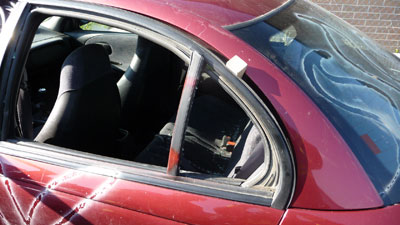 |
|
| Photo 2: Insert another wedge between the top of the window frame and the B or C pillar, creating a purchase point to insert your spreader tips high on the frame. |
|
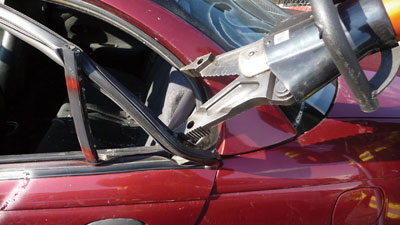 |
|
| Photo 3: Create a V-type pattern at the bottom of the window frame. This maximizes the surface area of your spreader tips, creating space to make direct contact with the latch. |
|
 |
|
| Photo 4: Orient the spreader at the bottom of the V-type pattern, and make a few small attempts to spread the corner of the door away from the vehicle body. |
|
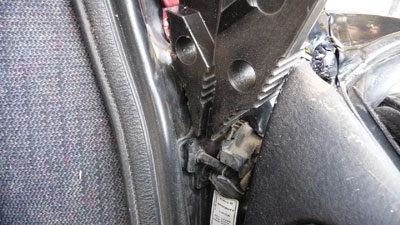 |
|
| Photo 5: Once the spreader tips make full contact with each other, you can spread the latch apart without tearing through the sheet metal. |
|
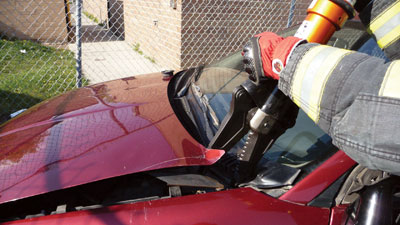 |
|
| Photo 6: Insert your spreader tips in the area where the edge of the hood meets the firewall. Spread the corner up to expose the hinges. | |
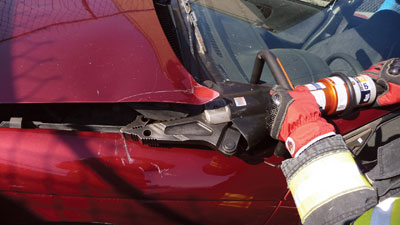 |
|
| Photo 7: Once exposed, you can cut the hinge to lift up the hood. | |
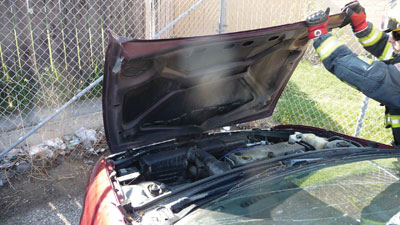 |
|
| Photo 8: Or, you can cut both hinges and remove the hood altogether. | |
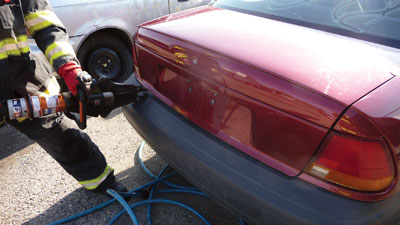 |
|
| Photo 9: To gain access to the trunk, start by placing your spreader tips at the corner of the trunk lid. Photos by Randy Schmitz |
Crash performance is a key factor built into the dynamic design of today’s vehicles to protect occupants and reduce injuries. All areas of the vehicle have been significantly improved in recent years so they can absorb crash energy, and dissipate and capture it throughout the vehicle in strategically engineered zones. Surrounding components, such as the doors, have a significant influence on the energy absorbed by the vehicle. Inner door beams, and their interconnection via strong door hinges and door latches, reinforce vehicle body pillars, and help to ensure that the doors remain closed in crashes. Instead of a singular latch mechanism to hold the door shut, safer designs include additional devices so that there are multiple retention points to hold the doors more securely to the vehicle body. Strong latching mechanisms that keep the doors closed in frontal collisions offer less give, and this equals more work for rescuers and hydraulic tools.
As a result, a lot of the surrounding sheet metal tears more easily than before. One way to minimize this in newer models is to expose the latching mechanism to allow the spreader tips to make direct contact, which reduces the tearing of the surrounding metal. First off, always check to see if the door will open simply by way of the handle; this is often overlooked when a door appears to be damaged. Next, use a rolled-up glove, wooden wedge or a tennis ball under the door handle to give some relief of the latching mechanism, as seen in photo 1.
Ensure the door is unlocked to disengage the secondary latch, so that the crushed metal is the only thing holding the door closed prior to spreading it off with hydraulic tools. Insert another wedge between the top of the window frame and the B or C pillar, as shown in photo 2. This will create a purchase point for the insertion of spreader tips high on the frame. Start spreading slowly and ensure a strong bite on the sheet metal. Continue to spread and open as large an area as possible by fully opening up the spreader arms to the maximum distance. You are trying to create a V-type pattern at the bottom of the opened window frame, into which you will insert the spreader tips, as shown in photo 3.
This maximizes the total surface area of the spreader tips and, as mentioned, creates space to make direct contact with the latch, which will helps to reduce the tearing of the sheet metal.
Next, orient the spreader, as depicted in photo 4. Then, make a few small attempts to spread the corner of the door away from the vehicle body until the tips reach the hardened metal door latch/striker assembly. Once the spreader tips are in full contact (see photo 5) you can spread the latch apart without tearing through the sheet metal.
The force generated on the hardened steel latch will then break or twist the fork bolt (the fork bolt is the part of the latch that engages the striker when in the closed or latched position) off the door latch/striker assembly and the door should open.
When manipulating the door in this manner, (depending on the type of door and how much damage has been done to it as a result of the crash) you may find that when the window frame is bent down and a corner section of the door moves with it, the door may simply come open without even breaching the latching mechanism by force.
In fact, Federal Motor Vehicle Standard 206 requires that the door latch remains closed when a front-to-rear load of 2,500 pounds is applied. The linkage between the inside door handle and the latch is called the remote rod or relay rod, and is often a coat-hanger type of thin wire or narrow metal strap. When the portion of the door that you are spreading flexes downward, that remote rod flexes or bends, thereby actuating the latch; this may result in the door opening with minimal force.
Getting to the battery under the hood can be done effectively by using an existing purchase point. Always try before you pry, first by checking to see if the manual hood release is operable, By inserting your spreader tips in the area where the edge of the hood meets the firewall, as shown in photo 6, you can easily spread up the corner of the hood to expose the hinges.
Once visible, you have the option to cut the hinge to allow for the hood to be lifted up (see photo 7), or repeat on the other side and remove the hood altogether by bending it up and out of the way, as shown in photo 8. Either way, this gives good access to the battery for disconnection.
Trunk-opening procedures should always be part of your benchmark checklist. Not only is this location becoming very popular for manufactures to have the 12-volt battery placed, but also, hazards such mobile meth labs, explosives, propane tanks or even people can be found in the trunk storage area. Again, always check first to see if you can gain access by using a key or a power trunk button.
Start by placing your spreader tips at the corner of the trunk lid, as in photo 9. This is, by far, a better place to begin a purchase point. If you place the tips at the center latch, you are attacking the mechanism at the strongest point possible, thereby working against the highest degree of resistance, which may cause the sheet metal to tear around the latching mechanism. Also worth noting is the fact that with today’s vehicles, the rear bumpers are made of Styrofoam or a honeycomb plastic that crumbles on impact. Hydraulic spreaders will have the same effect if they are placed under the latch and an attempt is made to open this area by force. Either corner will offer the least amount of resistance to pop open the lid. When you start to spread the corner upward, the force is transmitted to bear the latch load on the side and slightly bend the fork bolt to release it from the striker assembly. You will probably find that it takes very little effort for the lid to pop open when using this location.
These slight modifications should help you gain quicker access to damaged compartments.
Keep safe!
Randy Schmitz is a Calgary firefighter who has been extensively involved in the extrication field for 19 years. He is an extrication instructor and has competed internationally. He is the education chair for Transport Emergency Rescue Committee (T.E.R.C.) in Canada, a T.E.R.C. International extrication judge and a tester and evaluator for manufactured prototype products for extrication equipment. He can be reached at rwschmitz@shaw.ca
Print this page